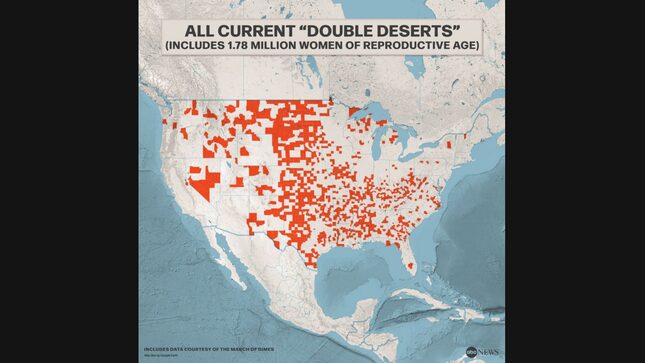Almost 2 Million Women Now Live in ‘Double Deserts’ Without Abortion or Maternity Care
The people trapped in these areas may have no choice but to continue their pregnancies without adequate prenatal, delivery, and postpartum care.
AbortionPolitics

An estimated 1.78 million women of reproductive age live in a U.S. county with no access to abortion or maternity care, according to a chilling analysis from ABC News and Boston Children’s Hospital. If the criteria are broadened to include counties with “low access” to maternity care, the number shoots up to 3.7 million women.
The women and pregnant people trapped in these areas may have no choice but to continue a pregnancy they didn’t want, or one that threatens their health, while being unable to get adequate prenatal, delivery, and postpartum care. It’s the horrifying collision of the twin crises of state abortion bans and women dying from pregnancy, and experts worry that the U.S. maternal mortality will continue to rise. Black women in the U.S. are three times more likely to die from pregnancy-related causes.
-

-

-

-

-

-

-

-

-

-

-

-

-

-

-

-

-

-

-

-

-

-

-

-

-

-

-

-

-

-

-

-

-

-

-

-

-

-

-

-








































